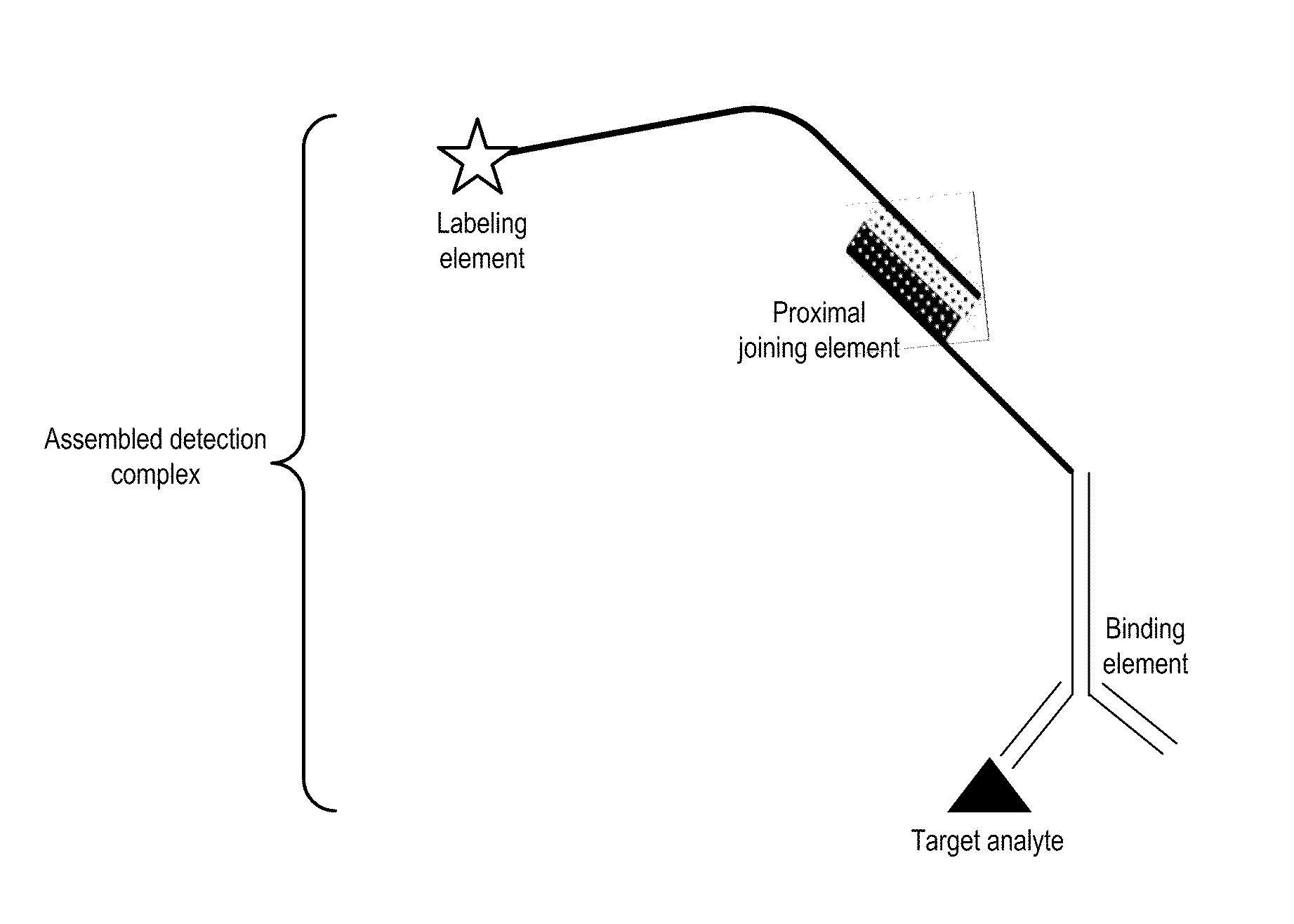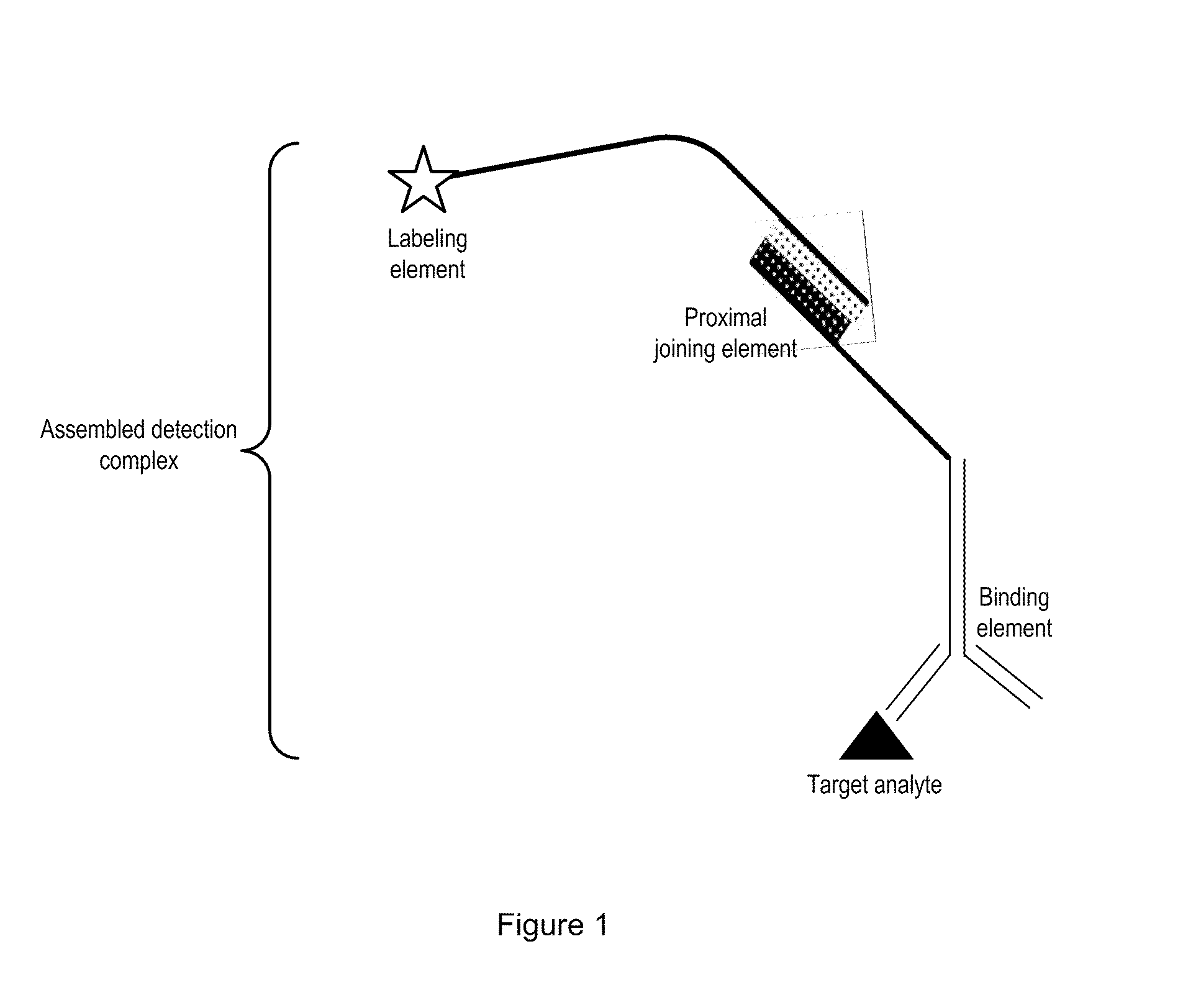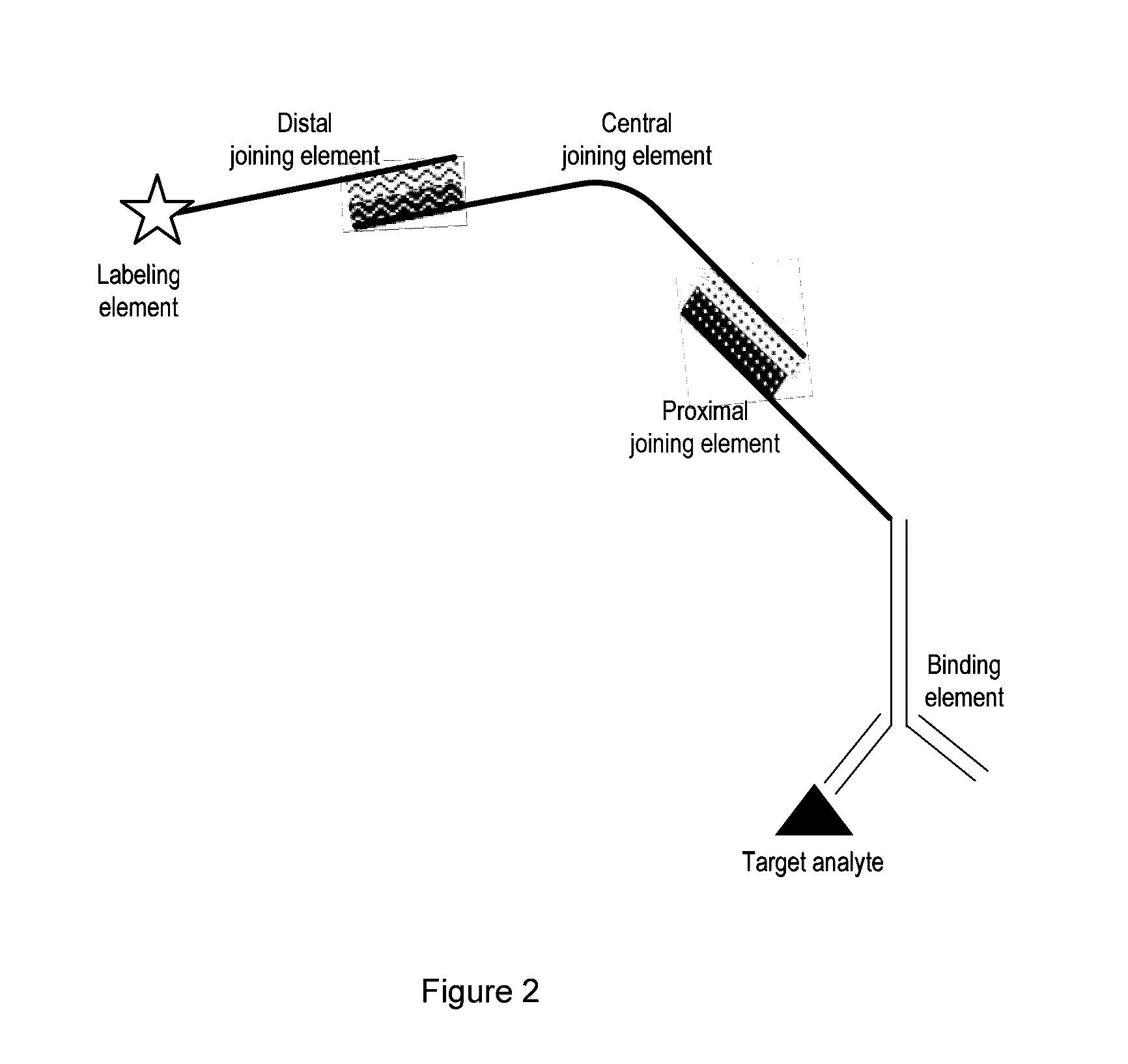Detection Composition
a detection complex and composition technology, applied in the field of biological assays, can solve the problems of requiring a significant investment of time and reagents, affecting the economic viability of manufacturers to produce and carry all possible combinations of directly conjugated detection complexes, and limiting the approach
- Summary
- Abstract
- Description
- Claims
- Application Information
AI Technical Summary
Benefits of technology
Problems solved by technology
Method used
Image
Examples
example 1
Phospho-Specific Flow Cytometry Using Oligo-Conjugated Dyes and Antibodies
[0214]Selection of proximal joining elements: Three species of 100 bp ssDNA oligonucleotides are selected having less than 25% sequence identity, and synthesized with a 5′ terminal amino group. These oligonucleotides shall be referred to herein as oligos A, B, and C.
[0215]Selection of distal joining elements: Three species of 100 bp ssDNA oligonucleotides are selected with 100% sequence complementary to oligos A, B, and C described above, and synthesized with a 3′ terminal amino group. These shall be referred to herein as oligos A′, B′ and C′.
[0216]Selection of binding elements: Three species of unlabeled, purified, phospho-specific, monoclonal antibodies are chosen with affinity for pStat1, pStat3, and pStat5.
[0217]Selection of labeling elements: Three species of fluorescent dyes are selected having minimally overlapping emission spectra, such that all three dyes can be measured simultaneously on a flow cytom...
example 2
Immunofluorescence Microscopy Using Oligo-Conjugated Dyes and Antibodies
[0246]Detection complex design: In this example, four target analytes are to be measured on a single section of human breast tissue mounted on a glass microscope slide. To illustrate the flexibility of assay design afforded by the invention, the microscope used in the example is only capable of measuring two parameters simultaneously. Two staining procedures will be performed, each using the same two classes of labeling elements. The first set of labeling elements will be removed by a stripping operation prior to staining with the second set of detection complexes.
[0247]Selection of proximal joining elements: Four species of 100 bp ssDNA oligonucleotides are selected having less than 25% sequence identity, and synthesized with a 5′ terminal amino group. These oligonucleotides shall be referred to herein as oligos A, B, C and D.
[0248]Selection of distal joining elements: Four species of 100 bp ssDNA oligonucleoti...
PUM
| Property | Measurement | Unit |
|---|---|---|
| Length | aaaaa | aaaaa |
| Composition | aaaaa | aaaaa |
Abstract
Description
Claims
Application Information
 Login to View More
Login to View More - R&D
- Intellectual Property
- Life Sciences
- Materials
- Tech Scout
- Unparalleled Data Quality
- Higher Quality Content
- 60% Fewer Hallucinations
Browse by: Latest US Patents, China's latest patents, Technical Efficacy Thesaurus, Application Domain, Technology Topic, Popular Technical Reports.
© 2025 PatSnap. All rights reserved.Legal|Privacy policy|Modern Slavery Act Transparency Statement|Sitemap|About US| Contact US: help@patsnap.com



